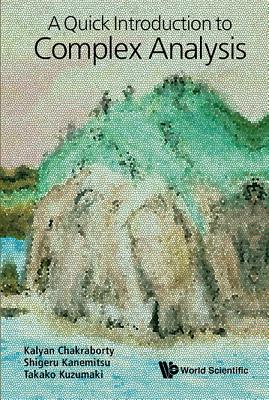The aim of the book is to give a smooth analytic continuation from calculus to complex analysis by way of plenty of practical examples and worked-out exercises. The scope ranges from applications in calculus to complex analysis in two different levels.If the reader is in a hurry, he can browse the quickest introduction to complex analysis at the beginning of Chapter 1, which explains the very basics of the theory in an extremely user-friendly way. Those who want to do self-study on complex analysis can concentrate on Chapter 1 in which the two mainstreams of the theory — the power series method due to Weierstrass and the integration method due to Cauchy — are presented in a very concrete way with rich examples. Readers who want to learn more about applied calculus can refer to Chapter 2, where numerous practical applications are provided. They will master the art of problem solving by following the step by step guidance given in the worked-out examples.This book helps the reader to acquire fundamental skills of understanding complex analysis and its applications. It also gives a smooth introduction to Fourier analysis as well as a quick prelude to thermodynamics and fluid mechanics, information theory, and control theory. One of the main features of the book is that it presents different approaches to the same topic that aids the reader to gain a deeper understanding of the subject.
The aim of the book is to give a smooth analytic continuation from calculus to complex analysis by way of plenty of practical examples and worked-out exercises. The scope ranges from applications in calculus to complex analysis in two different levels.
If the reader is in a hurry, he can browse the quickest introduction to complex analysis at the beginning of Chapter 1, which explains the very basics of the theory in an extremely user-friendly way. Those who want to do self-study on complex analysis can concentrate on Chapter 1 in which the two mainstreams of the theory — the power series method due to Weierstrass and the integration method due to Cauchy — are presented in a very concrete way with rich examples. Readers who want to learn more about applied calculus can refer to Chapter 2, where numerous practical applications are provided. They will master the art of problem solving by following the step by step guidance given in the worked-out examples.
This book helps the reader to acquire fundamental skills of understanding complex analysis and its applications. It also gives a smooth introduction to Fourier analysis as well as a quick prelude to thermodynamics and fluid mechanics, information theory, and control theory. One of the main features of the book is that it presents different approaches to the same topic that aids the reader to gain a deeper understanding of the subject.
Get Quick Introduction To Complex Analysis, A by at the best price and quality guranteed only at Werezi Africa largest book ecommerce store. The book was published by World Scientific Publishing Co Pte Ltd and it has pages. Enjoy Shopping Best Offers & Deals on books Online from Werezi - Receive at your doorstep - Fast Delivery - Secure mode of Payment
 Jacket, Women
Jacket, Women
 Woolend Jacket
Woolend Jacket
 Western denim
Western denim
 Mini Dresss
Mini Dresss
 Jacket, Women
Jacket, Women
 Woolend Jacket
Woolend Jacket
 Western denim
Western denim
 Mini Dresss
Mini Dresss
 Jacket, Women
Jacket, Women
 Woolend Jacket
Woolend Jacket
 Western denim
Western denim
 Mini Dresss
Mini Dresss
 Jacket, Women
Jacket, Women
 Woolend Jacket
Woolend Jacket
 Western denim
Western denim
 Mini Dresss
Mini Dresss
 Jacket, Women
Jacket, Women
 Woolend Jacket
Woolend Jacket
 Western denim
Western denim
 Mini Dresss
Mini Dresss






























































